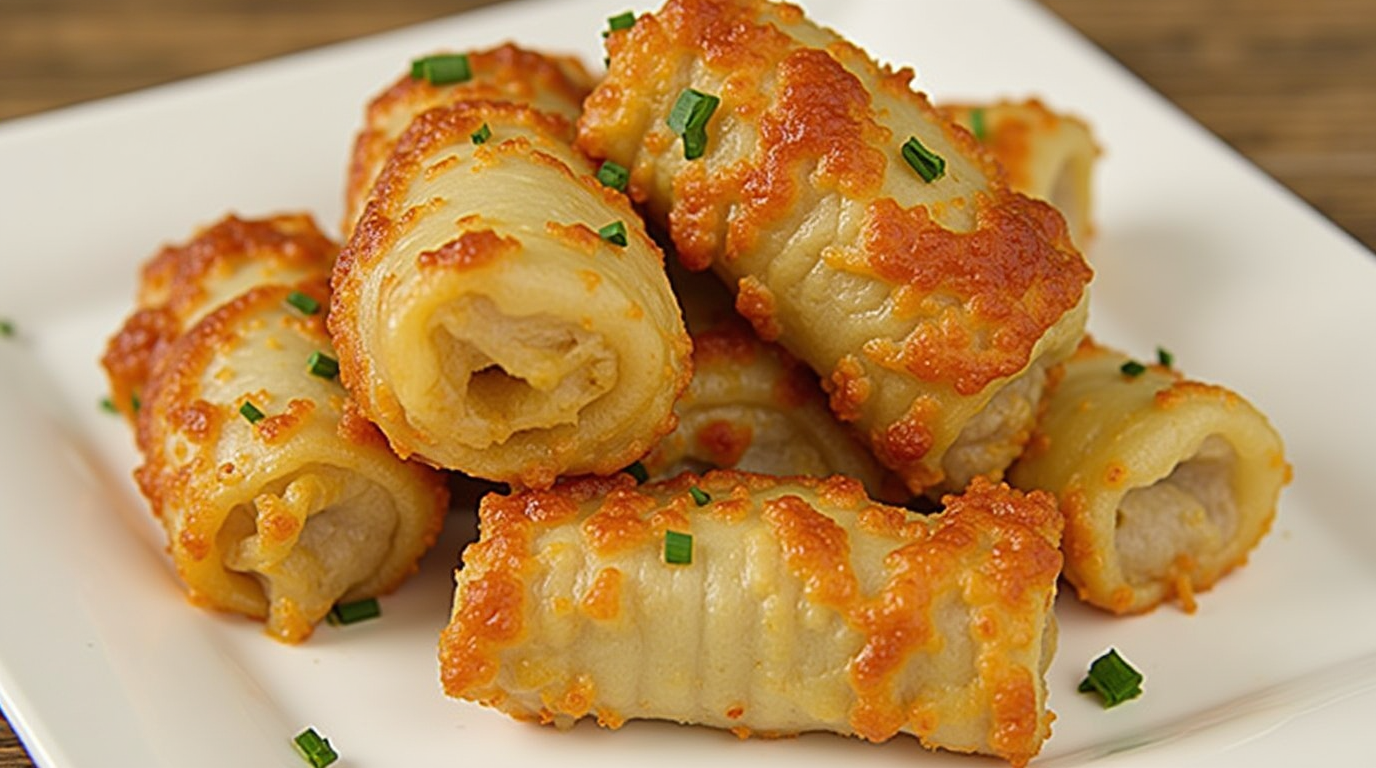Polish Cabbage Rolls: A Hearty Comfort Food with Generations of Flavor
Introduction
Polish cabbage rolls, also known as “Gołąbki” (pronounced go-wump-kee), are a beloved staple in many Eastern European kitchens. Stuffed with a savory mix of ground meat, rice, and seasonings, then wrapped in tender cabbage leaves and simmered in tomato sauce, these rolls are the ultimate comfort food. Hearty, filling, and full of home-cooked charm, Polish cabbage rolls are perfect for family dinners, celebrations, or cozy weekend meals. This article dives deep into the tradition, flavor, and technique behind this cherished dish, along with tips, variations, and personal stories that bring it all to life.
I. The Tradition Behind Gołąbki
Polish cabbage rolls are more than just a recipe—they’re a tradition passed down through generations. In many families, making Gołąbki is a group activity that brings everyone into the kitchen. Each cabbage leaf is carefully stuffed and rolled, with stories and laughter shared over the bubbling pot. The rolls themselves are a symbol of warmth and togetherness, wrapped with care and simmered slowly until every bite is rich with flavor.
II. Ingredients for Polish Cabbage Rolls
To make Polish cabbage rolls, you don’t need fancy ingredients—just a bit of time and love. Here’s what you’ll need:
- 1 large head of green cabbage
- 1 pound ground pork (or a mix of pork and beef)
- 1 cup cooked white rice
- 1 small onion, finely chopped
- 2 cloves garlic, minced
- 1 egg, lightly beaten
- 1 teaspoon salt
- ½ teaspoon black pepper
- 1 teaspoon paprika (optional)
- 2 cups tomato sauce or crushed tomatoes
- 1 tablespoon oil or butter for sautéing
III. Preparing the Cabbage Leaves
The first step is to prepare the cabbage. Bring a large pot of salted water to a boil and carefully place the whole head of cabbage inside. Let it cook for a few minutes until the outer leaves become soft and pliable. Gently peel off the leaves one at a time with tongs, trying to keep them intact. You’ll need about 12–14 good-sized leaves for this recipe. Trim the thick stem at the base of each leaf to make rolling easier.
IV. Making the Filling
Next, prepare the filling. In a skillet, heat a tablespoon of oil or butter and sauté the chopped onion until soft and translucent. Add the minced garlic and cook for another minute. In a large bowl, combine the sautéed onion and garlic with the ground meat, cooked rice, egg, salt, pepper, and paprika. Mix well until everything is fully incorporated.
V. Assembling the Rolls
To assemble the cabbage rolls, lay a leaf flat with the stem end facing you. Place about 2 tablespoons of filling near the base of the leaf. Fold the sides in over the filling, then roll from the bottom up, like a burrito. Repeat with the remaining leaves and filling.
VI. Cooking the Cabbage Rolls
Place a few leftover or torn cabbage leaves on the bottom of a large pot or Dutch oven to prevent sticking. Arrange the cabbage rolls seam-side down in a single layer. Once the bottom is filled, add another layer if needed. Pour the tomato sauce evenly over the rolls, making sure they’re mostly covered. You can also add a splash of water or broth for extra moisture. Cover the pot and simmer over low heat for about 1.5 to 2 hours, until the rolls are tender and fully cooked.
VII. The Final Dish
The result is a pot full of tender cabbage parcels, each bursting with a delicious mix of seasoned meat and rice, all nestled in a tangy tomato bath. The slow simmering brings everything together, allowing the flavors to meld into something rich and deeply satisfying.
VIII. Recipe Variations
Polish cabbage rolls are incredibly versatile and can be adapted to suit your taste or dietary needs.
- Vegetarian Version: Use sautéed mushrooms, lentils, or mashed beans in place of the meat.
- Grain Alternatives: Try quinoa or barley instead of rice.
- Creamy Sauce: Stir a spoonful of sour cream into the tomato sauce.
- Baked Version: Bake the rolls at 350°F for 1.5 hours in a covered dish.
- Add-ins: Try adding sauerkraut, dried fruits, or herbs like dill and marjoram for added flavor.
IX. What to Serve with Gołąbki
These rolls pair beautifully with a variety of side dishes. Traditional options include:
- Mashed potatoes
- Rye bread
- Boiled potatoes
- A dollop of sour cream
- Cucumber salad or pickled vegetables for a fresh contrast
X. Make-Ahead and Storage Tips
Polish cabbage rolls are perfect for meal prepping. They taste even better the next day after the flavors have developed.
- Refrigerate: Store leftovers in an airtight container for up to 4 days.
- Freeze: Let them cool completely, then freeze in sauce for up to 3 months.
- Reheat: Gently reheat on the stove or in the oven until warmed through.
XI. A Personal Story
Growing up, cabbage rolls were a special-occasion meal in our house. My grandmother would start early in the morning, carefully peeling cabbage leaves and simmering the sauce until it filled the whole house with a rich, savory aroma. She always said the key was patience—not rushing the process, letting each roll take its time to soften and soak in flavor. It wasn’t just food; it was an experience, and every bite brought back memories of family gatherings, holidays, and warmth.
XII. Final Thoughts
Making cabbage rolls from scratch might seem like a lot of work, but once you get the rhythm down, it’s incredibly satisfying. There’s a meditative quality to rolling each leaf, tucking in the filling, and layering them in the pot. It’s not a fast dish, but it’s one that rewards your effort with hearty comfort and timeless flavor.
In a world where so many meals are rushed or eaten on the go, Polish cabbage rolls are a reminder to slow down and savor the process. Whether you’re making them for your family, a gathering of friends, or simply to stock your freezer for easy dinners, Gołąbki offer a taste of tradition that never goes out of style.
So the next time you’re craving something hearty, homey, and full of flavor, reach for a head of cabbage and get rolling. You’ll find that Polish cabbage rolls are more than just a meal—they’re a warm hug from the past, served with a side of tomato sauce and love.

